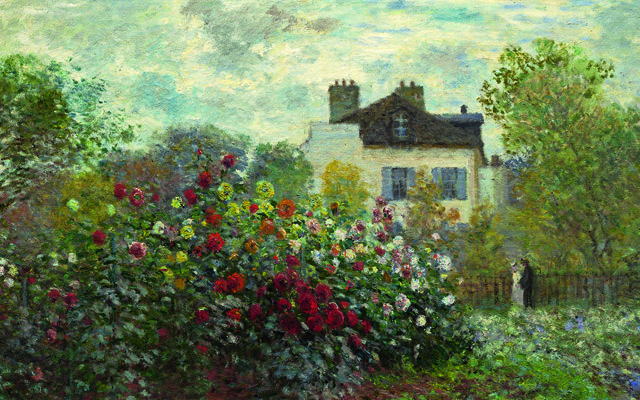Exhibition review: Inventing Impressionism at the National Gallery, London
Louise Nicholson lauds the dealer who put the Impressionists on the map.


Inventing Impressionism’ might be the best exhib-ition of Impressionist paintings held in London since the landmark show of 1905 at the Grafton Galleries. That one, staged by the charismatic and bold Parisian art dealer-entrepreneur Paul Durand-Ruel (1831–1922), was the first major exhibition of Impressionist paintings in Britain and was huge: 315 paintings by Monet, Pissarro, Renoir, Sisley, Manet, Cézanne and others.
The pictures did not sell particularly well. (It would be Roger Fry’s lesser show there in 1910 that opened British eyes to Impressionism.) This one, opening today at the National Gallery, is all about Durand-Ruel himself. There won’t be anything for sale, but it will have queues round the block. And this is why. For the Impressionist painters, DurandRuel was their mentor, showman and lifeblood.
Renoir called him their ‘missionary’. Monet said: ‘Without Durand we would have died of starvation, all of us impressionists. We owe him everything.’ Durand-Ruel bel-ieved passionately in his artists. He handed out monthly stipends, took risks with mounting shows, bought whole studios of paintings he could not sell on, made and lost fortunes.
Most of all, with his unfailing eye, he bought the best they were producing and introduced it to collectors across Europe and the USA. He was, in sum, the first super-dealer and the show’s title, ‘Inventing Impressionism’, pays tribute to his part in creating the seminal movement.
‘Inventing Impressionism’ has brought together just 85 paintings among the thousands that passed through Durand-Ruel’s books. A joint project by the National Gallery, Paris’s Réunion des Musées Nationaux (Grand Palais), in partnership with the Musée d’Orsay (where it has already been on exhibition), and the Philadelphia Museum of Art (where it goes this summer), the show is tailored to each venue and also has small but significant changes in content. As Anne Robbins, one of its curators at the National Gallery, says: ‘We spent four years researching, including through the Durand-Ruel Archives in Paris, so we made discoveries.’
One discovery was that the Courtauld’s much-loved ‘Bar’, as she refers to Édouard Manet’s Bar at the Folies-Bergère, is not the painting exhibited in the Grafton Galleries show. That was a study for the painting, made in 1881, now in a private collection and lent for the National Gallery show. This picture and 12 others are new to the London incarnation of the exhibition.
They include Daubigny’s St Paul’s from the Surrey Side (1871–3), Sisley’s View of the Thames: Charing Cross Bridge (1874) and Pissarro’s Pont Boieldieu, Rouen, Rainy Weather (1896 Durand-Ruel first met Pissarro and Monet in London in 1870–71 and exhibited their paintings in a Mayfair gallery he had at that time.
Exquisite houses, the beauty of Nature, and how to get the most from your life, straight to your inbox.
The gestation time of the show also led to some landmark loans. Monet’s extraordinary series of poplars painted in 1891 was well represented at Paris with three paintings. London adds two to the Paris show’s three, loans carefully won from Japan Poplars on the Bend in the Epte River, Overcast Weather from Tokyo’s ISE Cultural Foundation, and Poplars in the Sun from the Matsukata Collection in Tokyo’s National Museum of Western Art. Philadelphia will add one more from its own collection, whose terms of bequest do not permit it to lend.
The exhibition opens, as it did in Paris, with a simulation of Durand-Ruel’s own living room, the walls hung with portraits of Durand-Ruel himself and his children, all commissioned from Renoir, his favourite artist. Succeeding rooms are arranged as ‘mini monograph shows’, as the curator puts it, focusing on different artists one tells the story of Durand-Ruel’s purchase in 1872 of all 23 paintings in the studio of Manet, who was in financial straits.
As the epitome of loyal friend, defender, courageous enthusiast and dealer, Durand-Ruel bought (and sold) approximately 1,500 of Renoir’s paintings, more than 1,000 of Monet’s and hundreds from each of Pissarro, Degas and Sisley. Two years before he died, France awarded him the Légion d’Honneur, not for his contribution to art, but to foreign trade. The 85 paintings on show in London are the ‘crème de la crème’.
‘Inventing Impressionism’ is at the Sainsbury Wing, National Gallery, London WC2, until May 31 (020–7747 2885; www.nationalgallery.org.uk)
The accompanying catalogue, edited by Sylvie Patry, is entitled ‘Inventing Impressionism: Paul Durand-Ruel and the Modern Art Market’ (£35).
Country Life is unlike any other magazine: the only glossy weekly on the newsstand and the only magazine that has been guest-edited by His Majesty The King not once, but twice. It is a celebration of modern rural life and all its diverse joys and pleasures — that was first published in Queen Victoria's Diamond Jubilee year. Our eclectic mixture of witty and informative content — from the most up-to-date property news and commentary and a coveted glimpse inside some of the UK's best houses and gardens, to gardening, the arts and interior design, written by experts in their field — still cannot be found in print or online, anywhere else.
